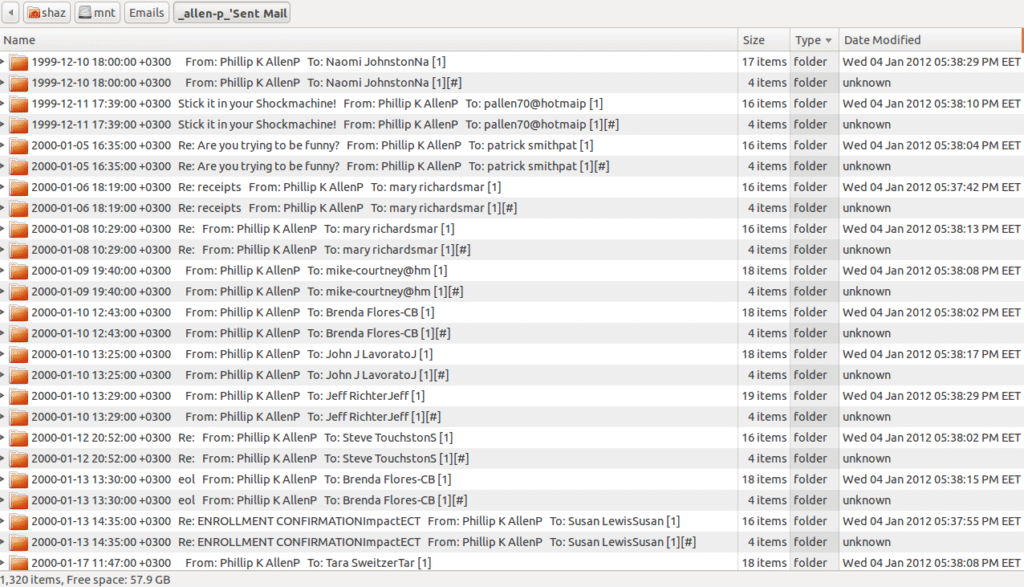Here is the brief description of enhancements introduced so far:

The enhancements done to InferatoFS can be examined by first mounting the File System. This can be achieved through command line or from within Eclipse IDE as is shown in Figure 1.

Once the file system is mounted, the user may use any MRA like Dovecot to download emails from his/her accounts. For demonstration purposes dovecot configurations were put in place to fetch emails from multiple (gmail, live, etc) accounts. The automatically downloaded emails (maildir format) were stored in temporary directory (.InferatoFS/Maildir):

The path to this directory is then passed to the transformation script using the following command:
. transformer.sh ~/.InferatoFS/Maildir /home/shaz/data/Emails /home/shaz/mnt/Emails-Here the ~/.InferatoFS/Maildir is used as the first parameter (to-be-transformed email repository), /home/shaz/data/Emails as second parameter (transformed email repository), and /home/shaz/mnt/Emails as the third parameter (path to mount location) by the following script:

The script in Figure 4 ensures that the emails are not transformed multiple times (in case of multiple calls to the same script). Further, the scripts ensure that the emails downloaded to temporary folder are deleted after transformation.
On execution, transformer script transforms emails from maildir format to our defined format. Each transformed email is represented by a folder whose name indicates the email date, subject, and partial information on sender and receiver. Further, a numeric value in square brackets indicates the number of existent email copies.

Please note that email content is saved only once. Bidirectional linking is used to relate the secondary copies to first copy encountered by the system. These links are automatically updated in case of deletions. Hence, the basic scenarios pertaining to broken links have also been dealt with during implementation.

The InferatoFS email format, itself, requires storage of individual bits of information in different text files. In case of multiplicity (e.g. recipients), a folder comprising relevant files is created.

Each of the # folders (existent for all files and folders) comprise of a length and type file. These files are there to assist search engines in optimally finding the desired content. The # folders for InferatoFS emails include the EML file which is generated on the fly – thus accurately reflecting any changes made to the content by the user.
These EML files are read by python script written for automatically sending out the emails. The configuration file for the script is listed in Figure 8:

This requires the user to specify the folder from which the emails are to be sent out, the folder to which the sent emails should be moved to, and the login credentials among other necessary bits of information.
